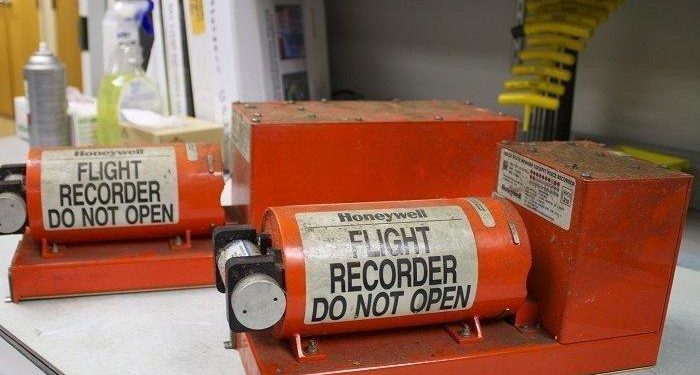Black box is a highly sought after object when an airplane has an accident. Its function is to store data on the latest conversations and communications between the pilot and the crew and control tower.
In addition, black boxes can also store various information from many sensors on the plane regarding problems that could be the cause of accidents.
Later, the recorded information will be used as a clue by the authorities to unravel the mystery of the cause of the accident.
Given its vital function, this tool still uses old technology and is still mechanical. Although the latest black box models already use solid-state memory as storage media, it took a long time for the rescue team to extract the black box from the crash site.
Moreover, the Black Box consists of two separate parts, namely the Flight Data Recorder (FDR) and the Cockpit Voice Recorder (VCR). These two important components have a high level of safety standards that are fire, explosion-proof, and able to withstand pressures up to 6,000 meters below sea level.
The question is, why is an important component like the Black Box not connected to the internet?
The answer is because this device requires super large quota and bandwidth to send every flight data and information.
Call it how the FDR component is tasked with storing flight parameters for the last 25 hours, before finally being updated with new recorded data. The stored information includes speed, altitude, time, and direction of the aircraft.
Meanwhile, the VCR keeps a conversation between the pilot and his crew or the control tower. The recording period is two hours, after which it will continue to re-record itself and overwrite the previous data.
This means that if the Black Box is connected to the internet continuously, you can calculate the size of the file to be uploaded. Not to mention that the speed of data access in each country or region also varies so that this method is still difficult to implement.
Launching the Science How Stuff Works page, Black Box will store recordings and data in real-time. However, to connect this device to the internet network is not easy.
There is a greater cost, apart from adding instruments and other components to all airlines. Please note, data bandwidth using satellite is also very expensive. It costs around 1 per kilobyte of US dollars, meaning that the data uploaded will increase over time.
The new Black Box model can record and store information data up to 25 hours of data in one continuous loop. They monitor at least 88 parameters such as cockpit control settings, engine information, timing, etc. The voice recorder also continues to record sound in the cockpit.
Apart from the cost constraints and digital instruments are still expensive. In fact, it does not guarantee digital streaming of flight fleet data to the cloud, especially during the critical moments before the incident.
Given that wireless transmission is very vulnerable to interference. It is very likely that the data sent will be interrupted or corrupted, making it difficult to evaluate the accident.
Black Box Innovation
The idea of developing a Black Box device is still ongoing, given the important role black boxes play in the world of aviation. There are a number of companies that are starting to bring data storage technology to Black Boxes.
One of them, FLYHT Aerospace Solutions, based in Canada. They provide a black box streaming service. The FLYHT Aerospace equipment has even been installed on 400 aircraft.
First Air Canada, is the only airline that uses the FLYHT system. Unlike the black box system in general, which will record flight data since it was still on the ground.
The FLYHT device will only activate if an abnormal event occurs. Later this instrument will quickly send data to airline servers for analysis and apply corrective action.
“If something goes wrong, we can provide a quicker insight into what’s going on. We can start putting the puzzle together faster, so (the airlines) can put aside some of the conspiracies that are out there,” said one employee. FLYHT, Graham Ingham.
These streaming devices are similar to the black box devices that have been used on planes for decades. Consists of CVR and FDR.
FLYHT offers services at a cost of around US $ 100 thousand or around Rp1.5 billion per aircraft, including hardware and installation. Satellite bandwidth is also not available for the cheap $ 1 per kilobit.
There is also Honeywell Aerospace in Arizona, USA, which collaborates with aviation manufacturing Curtiss-Wright Corp. They try to stream flight data recorded by the black box to the cloud via internet connectivity on the plane.
Also working with satellite operator Inmarsat to ensure this cloud-based black box technology is reliable and can be used by commercial airlines, cargo transportation and business jets.
John Peterson, vice president and general manager, Honeywell Aerospace Software and Services said one option is to set a reasonable data frame and frame rate for a particular event, then speed it up. It’s like pulling a whole piece of data every five minutes to once every 15 minutes, then if suddenly an event occurs, the stream will pull up the data every 100 milliseconds.
“The other way is to take a subset of the data and think of it as a continuous stream. As with data, there are lots of different ways to do it, the associated costs, and which aspects are the most valuable,” said Peterson.



